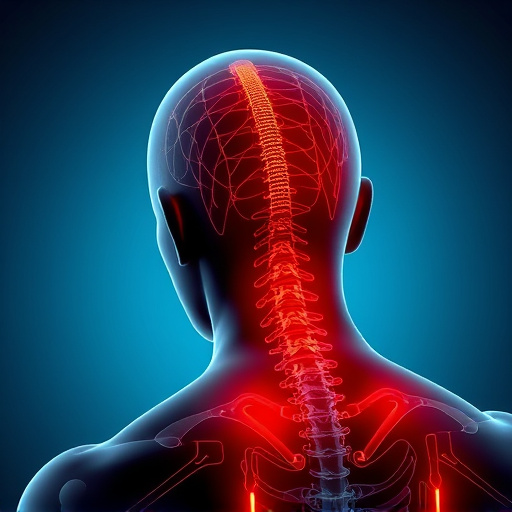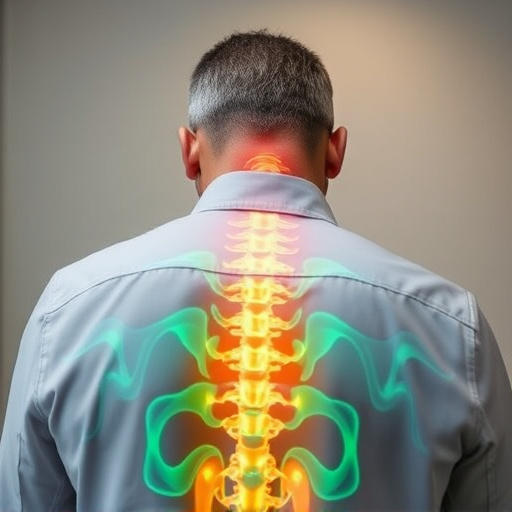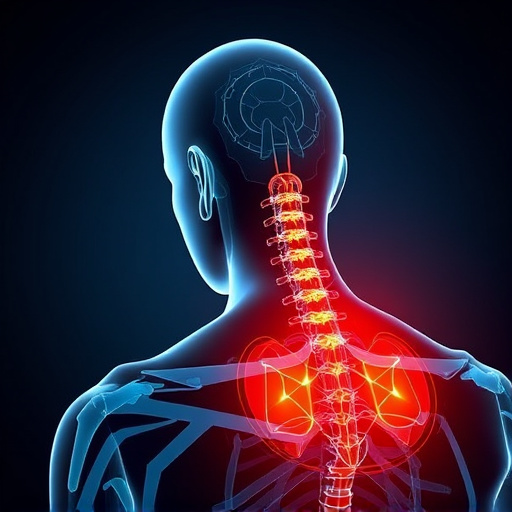After a job-related accident or injury, understanding your rights under workers' compensation is crucial for a successful recovery. This system provides comprehensive support, including medical care, hospitalization, medication, rehabilitation services, and wage replacement, ensuring employees receive proper treatment without fear of employer reprisal. Immediate action involves removing yourself from harm's way, seeking prompt medical attention, and documenting the incident. Filing a report with your employer within 24 hours initiates the process, leading to specialized medical treatments tailored to the injury type and severity. Physical therapy is a vital component, offering targeted rehabilitation plans to help employees recover and return to work safely. Proactive hazard management through safety training, risk assessments, and open communication minimizes workplace accidents, reducing compensation claims and fostering a safer, more productive environment.
“After accidents and injuries on the job, specialized treatment is crucial for employees. This comprehensive guide explores workers’ compensation and your rights as an injured worker. Learn immediate steps to take after an on-the-job injury, discover tailored medical treatments for diverse injuries, and understand the role of physical therapy in claims.
We also delve into legal considerations, benefits for injured employees, and a proactive approach to preventing workplace hazards. Maximize your recovery and understand your workers’ compensation injury care options.”
- Understanding Workers' Compensation and Injury Care Rights
- Immediate Steps After an On-Them Job Injury
- Specialized Medical Treatments for Different Injury Types
- Role of Physical Therapy in Workers' Comp Claims
- Legal Considerations and Benefits for Injured Employees
- Preventing Workplace Hazards: A Proactive Approach
Understanding Workers' Compensation and Injury Care Rights

After an accident or injury on the job, understanding your rights under workers’ compensation is crucial for navigating the road to recovery. Workers’ compensation insurance provides essential support and protection for employees who suffer work-related injuries or illnesses. This system ensures that workers receive medical care, rehabilitation services, and wage replacement while they recover. The benefits can cover various aspects of injury care, including hospitalization, medication, physical therapy, and even vocational rehabilitation to help with a successful return to work.
Knowing your rights is the first step in ensuring you receive proper treatment and support. Employees have the right to seek medical attention immediately and without fear of reprisal from their employers. This includes access to specialized care and treatments recognized by the workers’ compensation board. Understanding these entitlements empowers individuals to actively participate in their recovery process, make informed decisions about their health, and ultimately achieve a successful outcome.
Immediate Steps After an On-Them Job Injury
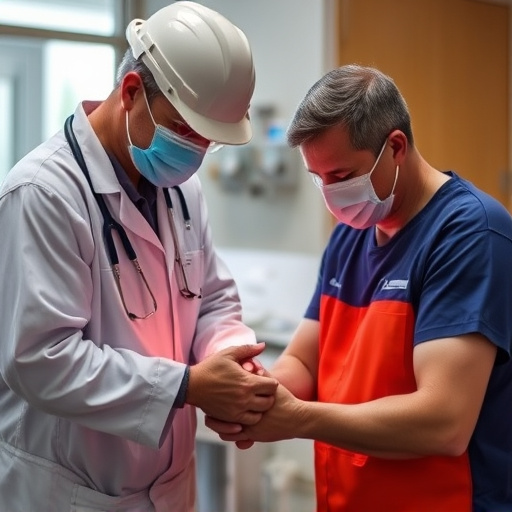
After sustaining a workplace injury, immediate action is crucial for effective workers’ compensation injury care. The first step is to remove yourself from the danger zone and seek medical attention as soon as possible. This involves alerting your supervisor or co-workers about the incident and any accompanying pain or symptoms. It’s important to document everything—the time, place, and nature of the accident, as well as any immediate injuries or discomfort.
Following this initial response, you should file a report with your employer within a specified timeframe (often within 24 hours), detailing the injury and the circumstances surrounding it. This triggers the workers’ compensation process, ensuring you receive appropriate medical care and potentially financial support during your recovery. Additionally, gathering evidence from witnesses and taking photos of the accident scene can be beneficial for supporting your claim later on.
Specialized Medical Treatments for Different Injury Types

Specialized medical treatments are crucial for optimal recovery from various accidents and injuries. Depending on the type and severity, different approaches are required to effectively address the unique needs of each case. For instance, workers compensation injury care often involves tailored rehabilitation programs designed to help employees return to the workforce after work-related traumas.
Specific injury types necessitate specialized attention. Spinal cord injuries, for example, require intensive physical therapy and specialized medical equipment to aid in mobility and independence. Similarly, traumatic brain injuries (TBI) demand comprehensive cognitive rehabilitation and support services to address memory, attention, and emotional challenges. Additionally, orthopedic injuries like broken bones or torn ligaments benefit from advanced surgical procedures followed by targeted physical therapy regimens for full recovery.
Role of Physical Therapy in Workers' Comp Claims

Physical therapy plays a pivotal role in workers’ compensation claims, offering specialized treatment and support for individuals who have suffered work-related injuries. This comprehensive care is designed to help employees recover, regain functionality, and return to their jobs safely. Physical therapists assess each patient’s unique condition, creating tailored rehabilitation plans that address specific limitations and pain points.
Through a combination of exercises, manual therapy, and education, physical therapists aid in reducing pain, improving mobility, and enhancing overall strength and endurance. This targeted approach not only facilitates a smoother transition back to work but also reduces the risk of long-term disability or chronic pain. In workers’ compensation cases, physical therapy is often a crucial component in ensuring that injured workers receive the proper care and support needed for a successful recovery and return to their professional duties.
Legal Considerations and Benefits for Injured Employees
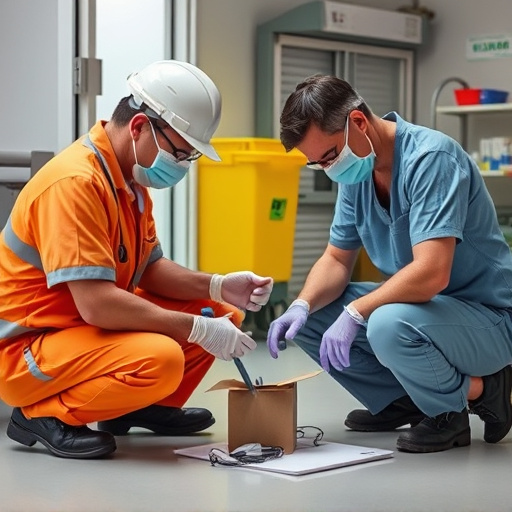
In the aftermath of an accident or injury on the job, legal considerations come into play, primarily centered around workers’ compensation. This system is designed to provide injured employees with necessary medical care and financial support while ensuring employers are protected from excessive liability claims. The benefits of this structured approach include access to specialized treatment for workers’ compensation injuries, where healthcare professionals focus on occupational-related harm.
Understanding the legal framework ensures that employees receive the appropriate level of care, including physical therapy, rehabilitation, and in some cases, long-term disability support. This system promotes a swift return to work for those capable while ensuring proper management of lasting injuries, ultimately fostering a safer and more supportive work environment.
Preventing Workplace Hazards: A Proactive Approach

Preventing workplace hazards is a proactive approach that plays a pivotal role in ensuring worker safety and mitigating potential compensation claims. By implementing robust safety measures, employers can significantly reduce the likelihood of accidents and injuries, fostering a healthier and more productive work environment. Regular safety training sessions are an effective way to educate employees about identified risks specific to their roles and the necessary precautions.
Moreover, conducting thorough risk assessments and maintaining up-to-date safety protocols provide a solid framework for accident prevention. This includes ensuring proper equipment maintenance, installing guardrails where needed, and promoting a culture of open communication where workers feel comfortable reporting potential hazards without fear of retribution. Early intervention and proactive hazard management are key to minimizing worker compensation injuries and fostering a positive safety culture on the job.
